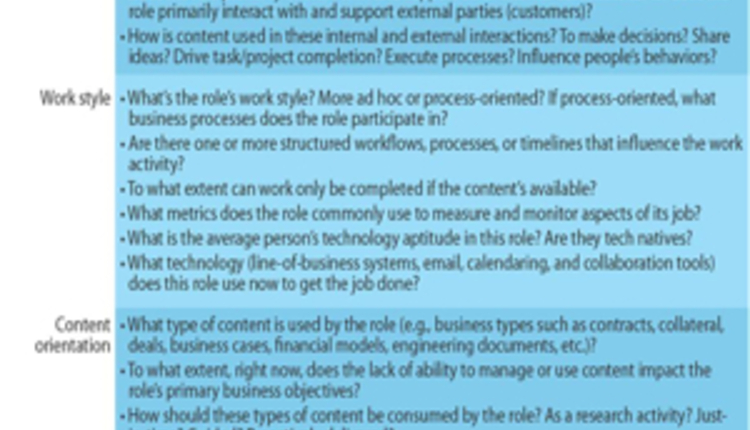
The age of the customer brings new forms of disruptive events that have redefined what business agility means for banks. Traditional events, such as business downturn, cost pressures and regulations, are known and managed by most banks. But age of the customer events, such as dramatic shifts in customer tastes, cybersecurity threats and disruptive payment alternatives, are new and unprecedented. Many banks we speak to are not ready—and are myopic about the potential for disruption. When they list their top competitors, they only mention other banks. Banks need a broader view—the business agility perspective—as:
- Banks face a mix of potential digital disruptors. Google's payment offerings are off to a slow start: Google Checkout was retired in September 2013, and Google Wallet is not meeting expectations. Apple's payment plans remain unknown. Yet, these potential disruptors will continue with innovative offerings backed by unprecedented cash reserves. Nontraditional digital disrupters are making moves as well: Wal-Mart has debit cards with no fees and new money transfer services. Even the US Post Office, starved for new revenue, will target the unbanked and under-banked segment. And why not? It has unmatched presence in remote locations where the unbanked are.
- The payment world is ripe for disruption. Virtual currencies, like Bitcoin, have grabbed positive and negative headlines but are only one of dozens of disruptive threats to banks that point to inefficiencies in the current payment system. Digital banks, digital investment managers, person-to-person (P2P) currency exchanges and social network disrupters that offer crowdfunding and social lending are just a few examples that may prove more potent in the short, medium and long term. One large retail bank rapidly dismissed potential threats of new payment forms, like PayPal. To the bank, they are just a front end—with the bank handling the guts of the transaction. But how narrow is this view? Isn't the bank losing touch with its customers and valuable data about them? And how about distributed payment networks, like Ripple, that provide a more efficient network and bypass the banks completely?
- Too many bank execs believe digital means having a few mobile apps. The age of the customer means customers are becoming digital through consumer technology, social media and attitudes that create unprecedented shifts in styles, tastes and loyalty. Most still distribute products through physical channels based on paper and analogue processing. Indeed, there is a lot of conversation about digital today. But when we ask bankers about going digital, this response is typical: "We are going digital; we just launched four mobile apps." This narrow view misses the point. Going digital is a lot more than building shiny new mobile apps; it's about digitizing the end-to-end business process supporting the customer.
- Banks' business models are vulnerable. Banks sit in between the customer—whether business or consumer—and a transaction. And just like music and book retailers, insurance agents and many other intermediaries, banks are vulnerable. Increasingly, bank customers have digital alternatives to banking products that have whittled away banks' contribution to the value chain.
Business agility is the answer.
Business agility will be banks' most fundamental strength and competitive weapon going forward. Old-economy advantages will keep digital disrupters at bay for a time, but future advantage will stem from an obsessed connection with a rapidly changing customer—and the ability to deliver on what those customers are telling the bank. This is the essence of business agility, which we define as follows:
"Business agility is the state of digital business that allows an enterprise to embrace market and operational changes as a matter of routine."But how do leading banks today compare on agility? We surveyed 30 banks and determined that high performers excelled in market agility dimensions. Stated simply, channel integration and market responsiveness, our two market agility dimensions, are among the largest agility gaps between high and low performers. We therefore anchored our ranking approach in these two critical market dimensions that drive economic performance.
To rank banks, we used two proxies or indicators that are highly correlated with excellence in these dimensions. Customer experience is a strong indicator for agility in the channel integration dimension; i.e., a strong customer experience requires sharing information across channels and providing support for the complete customer journey.
Likewise, adding new sources of revenue is a strong indicator for our market responsiveness dimension. To rapidly add emerging financial services, banks must gather customer and market knowledge and rapidly incorporate it into decisions to redirect resources.
Loosen your tie; roll up your sleeves; throw out your preconceptions.
The bank that is best prepared for disruptive events in the age of the customer will outperform their peers. To do this, banks must:
- Assess and monitor business agility. Diagnose your agility across the 10 dimensions and identify where you are weak. Use industry comparisons to compare yourself with your peers. Define and monitor agility metrics. These will help make the conversations more actionable throughout the enterprise.
- Not ignore the organizational dimensions. Be sure your team has the right digital psychology to fight off potential disruptors. Invest in knowledge dissemination to flatten the organization and boost market awareness. Customers are now highly informed and can act quickly. Your employees must do so as well. Investment in internal social and collaboration tools and culture allows this flattening to be efficient.
- Take aim at customer data management. Business agility is critical, and for banks, it starts with market dimensions. Regulations governing customers' personal identity data, especially in the wild west of open social environments, have not all been worked out. As new use cases occur, banks must be ready to quickly adapt: tuning, tweaking and streamlining customer data management (CDM) and third-party data management processes and architecture—and the resulting support organization—as a result of user feedback and system auditing are necessary activities for the agile bank.
- Pay more attention to segments—and target the Millennial. Banks that have the greatest success figure out what segments are the most important—small business, high net worth, mass affluent, unbanked/under-banked or Millennials. Successful banks will concentrate on improving customer experience to meet the evolving needs of younger customers. They may not be the most profitable segment today, but they are the future.
For more information on Mr. Le Clair's report, "Ranking The Most Agile US Banks," or on Forrester Research, visit www.forrester.com.










